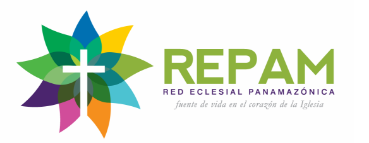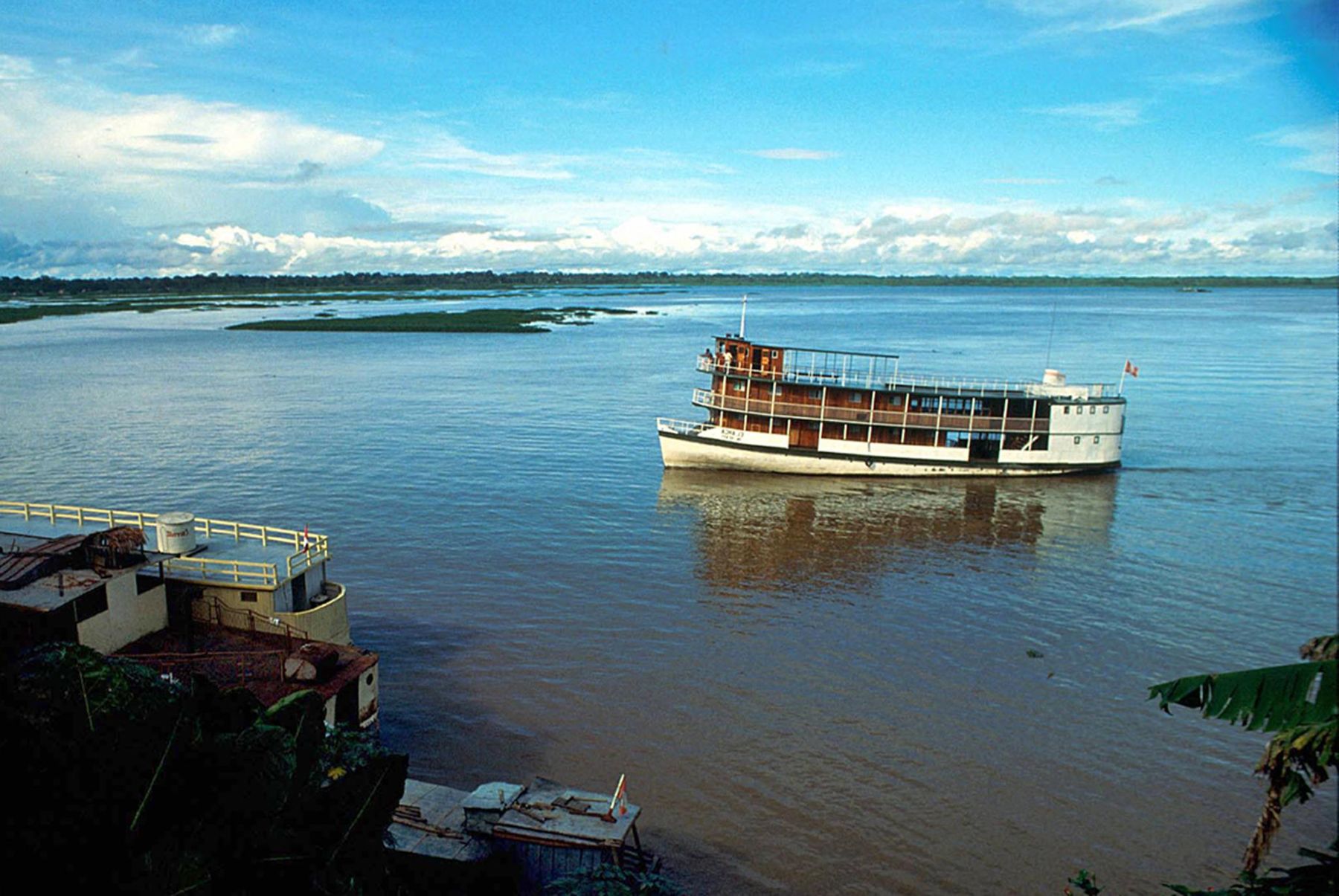By Manolo Berjón and Miguel Ángel Cadenas*
Markets need infrastructure in order to develop. In 2000, at a summit of South American heads of state in Brasília, the decision was made to pursue the Integration of Regional Infrastructure in South America (IIRSA, for its Spanish initials). The goal was to create an infrastructure network for regional connectivity across the continent. Modernization and competitiveness require infrastructure appropriate for the times.
The Amazonian Hydrovia is one of the IIRSA projects. It consists of making key Amazonian rivers “navigable year round.” During the dry season (July-October), it is more difficult for large vessels to reach the upper parts of watersheds. The Hydrovia project will involve dredging certain points so larger vessels can reach ports farther upriver. The project will affect the Amazon, Ucayali, Marañón and Huallaga rivers in Peru, according to the Ministry of Transportation and Communication. We believe, however, that it will affect the entire watershed.
This project views Amazonian rivers simply as currents of water or liquid highways. But all cultures and all people do not view rivers as mere waterways. The river is the place where indigenous people live and bathe, the source of their water for drinking and cooking, the place where they fish and where they relate to their spirits. The river is much more than a liquid highway; the river is life itself. Dredging the rivers will cause an unprecedented transformation in the lives of indigenous people. What is advantageous for large economic interests causes suffering for indigenous peoples. Nevertheless, economic interests are pressuring for the project to go ahead.
We have been concerned about the Amazonian Hydrovia for some time. Whenever we participated in events in the parish or with indigenous organizations, we raised the issue. One day, we met Juan Carlos Ruiz Molleda, a lawyer from the Legal Defense Institute (Instituto de Defensa Legal, IDL), at an event and he took an interest in the project. We networked with an indigenous organization in the Marañón River Valley that was interested in demanding a prior consultation about the project. Under Peruvian law, indigenous communities have a right to prior consultation about any development project that affects their collective rights. IDL provided legal assistance, and our parish team committed to encouraging the communities throughout the process.
“BAD SPOTS” OR “SAND BANKS”: CALLING THINGS BY THEIR TRUE NAMES
We began to hold workshops to help indigenous organizations understand the importance of the Hydrovia. During this process, the indigenous organization ACODECOSPAT helped draft and signed the complaint that was presented to Peru’s Constitutional Court in March 2014, calling for the right to a prior consultation, which the Ministry of Transportation and Communication had omitted. Shortly thereafter, government officials visited ACODECOSPAT to talk, telling the indigenous representatives that there was no cause for concern, that everything was under control. The Hydrovia, they said, would bring them “development.”
By then, we had held various workshops. One meeting with the Ministry revealed some difficulties. The Ministry identifies malos pasos, or “bad spots,” as places that must be dredged to make the river channel deep enough for year-round navigation. The term “bad spot” indicates the need for dredging. The Kukama call these places bancales or “sand banks”—places where fish rest, places where the fishing is good. Calling things by their true name is primordial.
In October 2014, the Constitutional Court in Nauta, in Peru’s Loreto region, issued a decision requiring the Ministry of Transportation and Communication to conduct a prior consultation. The government played its hand shrewdly. Since it was forced to consult, it would consult—but it expanded the project beyond the Marañón River, summoning all of the recognized indigenous organizations in the four watersheds to a meeting in April 2015 in Pucallpa, on the Ucayali River, far from the Marañón. The Ministry agreed to hold workshops. Because the government was including the other watersheds, the Ministry would lead workshops with indigenous organizations that had never heard of the Hydrovia project before and did not know why it was important. Advisers to the indigenous organizations would also participate in the process.
A substantial change followed. Until then, the advisers had mainly been coordinated by the Church. At this point, however, advisers from non-governmental organizations joined the process. They had good intentions and excellent legal experience, but two key shortcomings: They had little understanding of indigenous peoples, and they lacked knowledge about the project’s environmental impacts on the river. The consultation officially began in May 2015 and ended in September, with approval of the Amazonian Hydrovia. The indigenous peoples had won a consultation of the terms of reference for the Environmental Impact Assessment. The government had won the indigenous organizations’ approval. Both the government and the indigenous organizations were satisfied with the outcome.
So where does the difficulty lie? There are no scientific studies about the project’s potential impacts. Such studies would take more time, greater investment and experienced researchers. Without them, however, how can terms of reference be established? The Peruvian government is in a hurry. The hydrovia will make it possible for products to be shipped from Brazil to Peru’s Pacific coast, along Amazonian rivers that connect to highways at key river ports. This will create a commercial route from Brazil to China along Amazonian waterways.
From an environmental standpoint, the consequences are unknown. But it is obvious that dredging one point can affect an entire watershed. Migratory fish, which travel along the entire course of the river to spawn, will be seriously affected. Dredging one part of the river will change the riverbed, destabilizing the ecological equilibrium.
It will also have consequences for the indigenous people living along the rivers, with impacts on their cosmology and shamanism, the disappearance of fish from key fishing spots, and an increase in the number of large vessels, which create powerful wakes that can swamp the local people’s small canoes. In this age of climate change, introducing such changes without understanding the true consequences is reckless. The logical course would be to investigate before risking unforeseeable outcomes. Once again, economic interests impose their logic and their time frame. The Hydrovia will strip indigenous peoples of territory—the rivers—for the benefit of large economic interests.
To understand the real impact of the hydrovia, we must also consider the other megaprojects proposed for the Loreto region, including roads (especially Iquitos-Santa María de Nanay-12 de Octubre-Andoas-Saramiriza and Bellavista-Mazán-Salvador-El Estrecho), hydroelectric dams, and oil exploration and production. The combined impacts of these megaprojects will be severe for indigenous peoples and the environment.
SOME CHALLENGES
The greatest challenge has indigenous peoples as the protagonists. Indigenous organizations and their advisers must be more diligent. It is incredible that the national indigenous organizations did not find out about this process. And when they did become involved, it was basically to approve the project. An observation that bears repeating: they did so without knowing the true impacts of such a huge project.
One parish, acting locally, raised the issue of the Amazonian Hydrovia—a major issue with a very broad scope. But the Church must also be prepared to respond. In a case like this, acting in one’s “own” territory, whether a parish or a vicariate, accomplishes little. When the government moved the consultation the Pucallpa, on the Ucayali River, far from the parish and the Vicariate of Iquitos, the indigenous participants were left without some of the guidance they needed. Church coordination faded into the mist.
At the meeting in Pucallpa, the indigenous leaders gave up calling the dredging sites bancales or “sand banks” and the term malos pasos, or “bad spots,” was imposed. The master play was complete. The way was cleared for the project’s approval. The government rubbed its hands gleefully. Meanwhile, because of the lack of sharing of ideas and experiences, the Church was unable to help defend the indigenous peoples adequately in this megaproject. Unfortunately, the Church, although it was involved in the beginning of this initiative, did not know how to act at the Amazonian or national level.
Non-governmental organizations tend to depend on projects for funding; this limits their actions. They are not necessarily able to respond to rapidly unfolding events. And their funders often end up imposing their viewpoints. Funders only approve the projects they consider opportune. As though the funders lacked interests of their own or were transparent, without ideologies. Meanwhile, many NGOs specialize in a certain issue, but they do not necessarily have the personnel necessary for multidisciplinary analysis and collaboration.
__
*Manolo Berjón and Miguel Ángel Cadenas are Augustinian missionaries in Iquitos.
___
Traduced by Barbara Fraser

